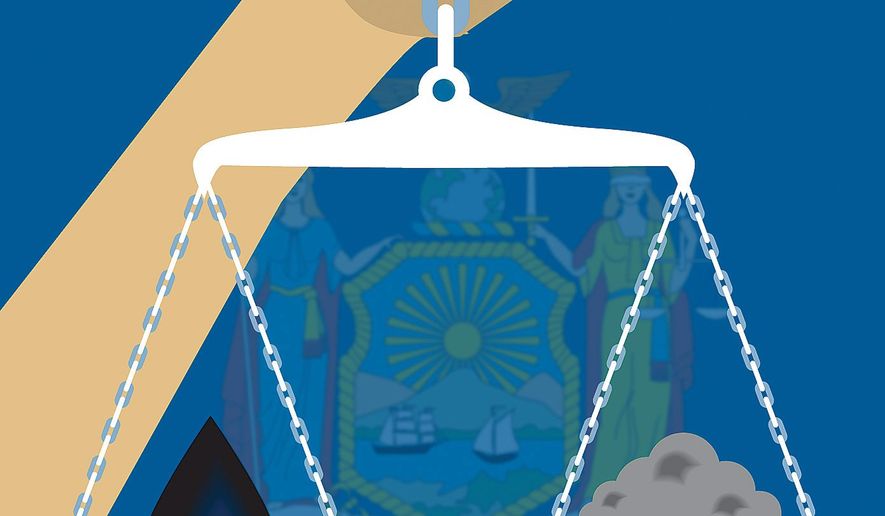OPINION:
On January 10, the city of New York filed suit against BP, Chevron, Conoco-Phillips, ExxonMobil and Royal Dutch Shell. The suit accuses oil companies of causing dangerous climate change and damage to New York City, seeking monetary compensation. But history will rank this action high in the annals of human superstition.
The 67-page suit claims that burning of fossil fuels marketed by the oil industry changes the climate and that these changes are “injuring New York City.” The suit projects an increase in deaths from heat waves, flooding from extreme weather that would impact the city’s water supply system, increasing frequency of droughts that would diminish water to upstate New York reservoirs, and catastrophic flooding from rising oceans.
Hurricane Sandy is mentioned several times in the suit as an example of both extreme weather and rising oceans from human-caused warming. As a result of Sandy, New York launched a $20 billion effort to prepare for the effects of climate change in 2017. The city wants oil firms to pay for this effort, claiming they are causing “continuous and reoccurring injuries to the city.” But these claims border on the superstitious.
Hurricane Sandy hit New Jersey and New York City on October 29, 2012 with Category 1 hurricane-force winds of 81 miles per hour. It came ashore at high tide causing extensive flooding. The storm resulted in 147 and over $50 billion in assessed damage. But this has happened before.
More than 80 tropical or sub-tropical storms struck New York State during the last 300 years. An example was the Norfolk and Long Island Hurricane of 1821. It hit New York City with Category 3 force winds, much stronger than Category 1 Sandy. Although it came ashore at low tide, when ocean levels were five feet lower than when Sandy hit, the 1821 storm flooded New York City up to Canal Street.
According to the National Hurricane Center, 170 hurricanes made US landfall during the twentieth century. Fifty-nine of these storms generated at least Category 3 wind speeds, stronger than Category 1 Sandy. How then was Hurricane Sandy evidence of human-caused global warming?
Ocean levels have risen about 120 meters (390 feet) in the last 20,000 years, according to data from NASA. Tidal gauges show a rise of about 7 inches per century over the last 150 years. No scientist can tell us when natural sea level rise stopped and man-made sea level rise began. New York City is correct to prepare for rising seas, but wrong to believe that greenhouse gases from burning oil are causing the rise.
Throughout history, people have believed that human actions can change the climate and cause extreme weather. The Aztecs of the 1500s practiced human sacrifice in an attempt to control the weather and to keep the Sun moving across the sky. After King Henry divorced his wife, Catherine, in 1533, the English believed that nine months of unusually heavy rainfall were a result of the divorce. During the cool climate of the Little Ice Age between the fourteenth and nineteen centuries, hundreds of thousands of people in Europe were executed for the crime of witchcraft, blamed for short growing seasons and crop failures.
Today we still live in a world of superstition. Climate advocates tell us that if we change our light bulbs we can save polar bears. If we erect wind turbines we can make the storms less severe. And if we drive electric cars we can stop the oceans from rising. Our modern witches are the oil and coal companies.
• Steve Goreham is the author of “Outside the Green Box: Rethinking Sustainable Development” (New Lenox Books, 2017).




Please read our comment policy before commenting.